Pit and fissure sealants are a crucial preventive dental treatment for children and adolescents. This technique aims to fill the grooves and fissures on the chewing surfaces of teeth to prevent the development of cavities. These grooves, particularly in the molars, are difficult to clean and easily accumulate food debris and bacteria, making them highly susceptible to caries. Pit and fissure sealants not only address cosmetic and functional concerns but also offer a simple, safe, and non-invasive method to protect teeth from decay.
In this article, we will provide a detailed introduction to the concept, indications, procedure, material choices, clinical applications, and future directions of pit and fissure sealants, helping both parents and dental professionals better understand and implement this preventive oral care technique.
1. Basic Concept and Principles of Pit and Fissure Sealants
1.1 What are Pit and Fissure Sealants?
Pit and fissure sealants (PFS) are a preventive dental procedure that involves applying a specialized resin material to the grooves and fissures on the surfaces of teeth. These grooves and fissures are natural formations that help in food grinding, but they can also become trapping grounds for food particles and bacteria. If left unprotected, these areas are highly vulnerable to decay.
By applying a layer of sealant to these areas, pit and fissure sealants reduce the accumulation of food particles and bacteria, preventing the onset of caries. The sealant not only acts as a physical barrier but also prevents bacteria from entering the grooves, significantly reducing the risk of tooth decay.
1.2 The Principles of Pit and Fissure Sealants
The principle of pit and fissure sealants lies in protecting the grooves and fissures of teeth from bacterial invasion and food accumulation. Specifically, the mechanism includes the following key points:
- Prevents Food Accumulation: Grooves and fissures in teeth, particularly molars, are often complex and difficult to clean. Sealants cover these areas, preventing food debris from becoming trapped.
- Prevents Bacterial Invasion: Bacteria are the primary cause of tooth decay. Sealants create a barrier that isolates the grooves from bacteria, reducing the risk of decay.
- Improves Oral Hygiene: The application of sealants makes the surface of the teeth smoother and easier to clean, improving the overall cleanliness of the mouth.
- Enhances Tooth Resistance: Some sealant materials release fluoride, which strengthens the enamel and increases the tooth’s resistance to acids and bacteria, further reducing the risk of cavities.
2. Indications and Contraindications of Pit and Fissure Sealants
2.1 Indications for Pit and Fissure Sealants
Pit and fissure sealants are most commonly used in children and adolescents, particularly during the eruption of permanent molars. The indications for this procedure include:
- Children and Adolescents: The primary candidates for pit and fissure sealants are children and adolescents because their teeth are still developing, and the grooves in their molars are prone to bacterial accumulation and decay. Additionally, children often have developing oral hygiene habits, making them more susceptible to cavities.
- Teeth with Deep Grooves: The depth of the grooves in teeth directly impacts the risk of caries. Deeper grooves are more likely to trap bacteria, making them ideal candidates for sealant application.
- Recently Erupted Permanent Teeth: As permanent teeth erupt, they become vulnerable to cavities, particularly the first and second molars. Applying sealants to these newly erupted teeth is a highly effective preventive measure.
- Children with Poor Oral Hygiene: Children who have difficulty maintaining oral hygiene or who are unable to clean their teeth properly are excellent candidates for sealants as an additional protective layer.
- Teeth Without Existing Cavities: Sealants are most effective when applied to teeth that are free of visible cavities. The procedure is preventive, and it helps avoid the onset of caries. For teeth with existing cavities, caries treatment (such as filling or root canal therapy) should be completed before applying sealants.
2.2 Contraindications for Pit and Fissure Sealants
While pit and fissure sealants are highly effective, they are not suitable for every situation. The contraindications include:
- Teeth with Existing Cavities: Sealants should not be applied to teeth that have already developed cavities, especially in the grooves. In such cases, it is necessary to address the caries first (such as with fillings or root canal therapy) before considering sealant application.
- Teeth with Shallow or Irregular Grooves: If the grooves are shallow or not well-defined, the sealant may not adhere well, and the procedure may not be necessary.
- Allergic Reactions: In rare cases, patients may be allergic to the materials used in sealants. It is important to discuss potential allergies with the dentist before proceeding with the treatment.
- Poor Oral Hygiene: Sealants should not be applied to teeth in patients who do not have adequate oral hygiene, as the material may not bond properly to the tooth surface. Good oral hygiene must be established before applying sealants.

3. Materials and Techniques for Pit and Fissure Sealants
3.1 Common Materials Used for Pit and Fissure Sealants
Pit and fissure sealants can be made from different materials, the most common being resin-based materials and glass ionomer materials.
- Resin-Based Materials
Resin-based materials are the most commonly used for pit and fissure sealants due to their good adhesion and wear resistance. The advantages of resin-based materials include:
- Aesthetics: Resin materials can be color-matched to the natural tooth, making them more aesthetically pleasing, especially for anterior teeth.
- Strong Adhesion: Resin materials bond well to tooth surfaces, providing a stable and long-lasting seal.
- Wear Resistance: Resin materials are highly durable and resistant to wear, making them suitable for long-term use.
The downside of resin-based materials is that they require a light-curing process and are more technique-sensitive than other materials.
- Glass Ionomer Materials
Glass ionomer materials are an older, yet still widely used, choice for pit and fissure sealants. Their advantages include:
- Antibacterial Properties: Glass ionomer materials release fluoride, which can enhance the tooth’s resistance to decay and provide ongoing protection.
- Chemical Bonding: Glass ionomer materials chemically bond to tooth enamel, reducing the need for etching and bonding agents.
The main drawback of glass ionomer materials is their lower wear resistance compared to resin-based materials, making them more suitable for teeth that are not subjected to heavy chewing forces.
3.2 The Procedure for Pit and Fissure Sealant Application
Pit and fissure sealant application is a straightforward and effective procedure, typically involving the following steps:
- Initial Examination and Preparation: The dentist examines the teeth to ensure there are no existing cavities or other issues. Then, the tooth surfaces are cleaned and dried to ensure proper adhesion of the sealant.
- Acid Etching: The dentist applies an acid etching agent to the surface of the tooth, especially the grooves, to remove the mineral layer and create a rough surface. This step improves the bond between the tooth and the sealant material.
- Application of the Sealant: After etching, the sealant material is applied to the grooves and fissures of the tooth. Resin-based materials are then light-cured using a special curing light, while glass ionomer materials typically harden naturally at room temperature.
- Curing and Adjustment: Once the material is cured, the dentist checks the fit and adjusts the sealant if necessary to ensure that the tooth’s bite is not affected and the sealant is properly placed.
- Final Check and Follow-Up: After the procedure, the dentist ensures that the sealant is intact and that there are no issues with the tooth’s alignment. Regular follow-up visits are necessary to check the sealant’s condition and ensure long-term effectiveness.
4. Effectiveness and Maintenance of Pit and Fissure Sealants
4.1 Effectiveness of Pit and Fissure Sealants
Pit and fissure sealants are highly effective in preventing cavities, especially on the chewing surfaces of molars. Studies show that sealants can reduce the incidence of caries in the treated areas by over 70% during the first five years. They are particularly effective in newly erupted permanent molars, which are highly susceptible to caries.
Research has shown that sealants can significantly reduce the caries rate, particularly in the chewing surfaces of molars, where food and bacteria accumulate. Over time, sealants can provide long-lasting protection when maintained properly.
4.2 Maintenance of Pit and Fissure Sealants
Pit and fissure sealants are not permanent and may wear down or become damaged over time. Therefore, regular maintenance is essential to ensure their continued effectiveness. The following maintenance guidelines are recommended:
- Regular Checkups: It is essential to have regular dental checkups to monitor the condition of the sealant. If the sealant becomes damaged or dislodged, it should be replaced promptly.
- Good Oral Hygiene: Parents should encourage children to maintain good oral hygiene by brushing at least twice a day with fluoride toothpaste and flossing regularly to keep the sealant area clean.
- Avoid Hard Foods: After sealant application, children should avoid biting hard objects like ice, nuts, or candy to prevent damage to the sealant layer.
5. Future Developments in Pit and Fissure Sealants
As technology advances, so do the materials and techniques used in pit and fissure sealants. Future developments may include:
- Advanced Materials: New materials may be developed that are even more durable, wear-resistant, and antibacterial, providing long-term protection against cavities.
- Smart Sealant Materials: Future materials may have self-healing properties, enabling them to repair small cracks or wear on their own, thus extending the life of the sealant.
- Increased Accessibility: As awareness of oral health increases, the use of pit and fissure sealants may become more widespread, especially in low-income areas and developing countries.
6. Conclusion
Pit and fissure sealants are an effective, safe, and simple preventive measure in the fight against dental caries in children and adolescents. By applying sealants to the grooves of molars, dental professionals can significantly reduce the risk of cavities, providing children with long-term oral health benefits. Parents and dental care providers should prioritize the use of pit and fissure sealants, especially for newly erupted permanent teeth. Regular checkups, good oral hygiene, and proper maintenance are key to ensuring the long-term success of sealant treatments and maintaining optimal dental health.

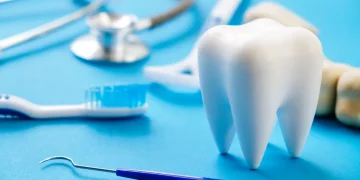






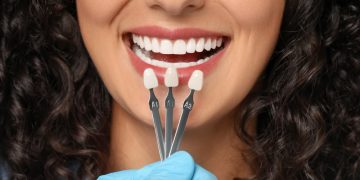
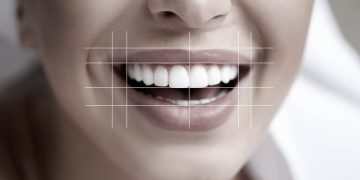









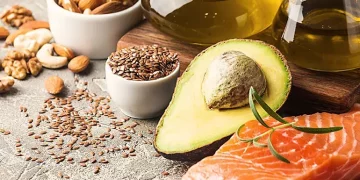





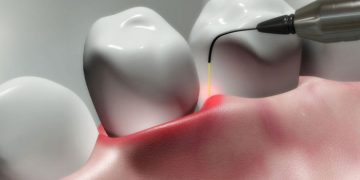


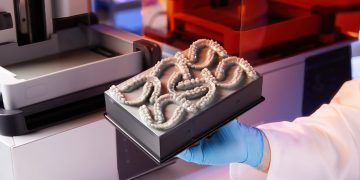

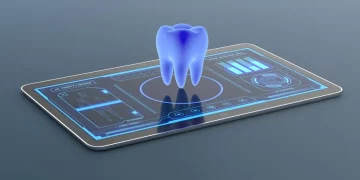














Discussion about this post